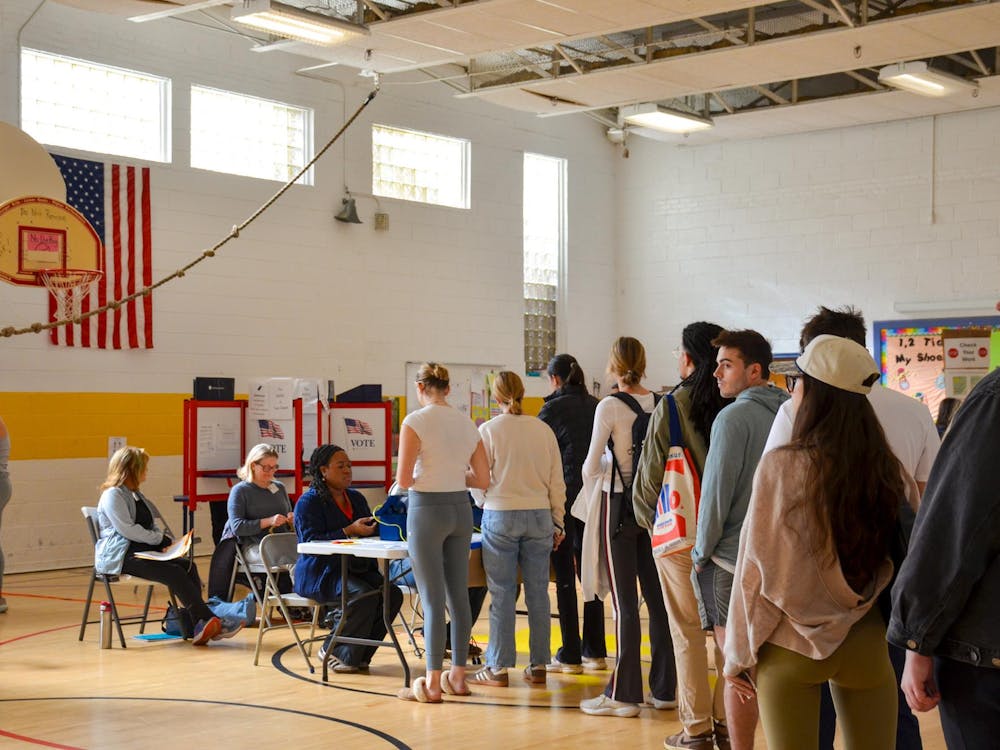Transfer students applying to the University face virtually the same application as first years, save for one essay question, which asks, "Why do you want to transfer?"
The question is one that transfer students may find themselves revisiting once they are accepted and decide to face the social, logistical and academic upheaval associated with switching from one school to another.
Yet, in the end, most transfers say the rewards of being a University student outweigh the stresses of the process.
Admissions, Take Two
Perhaps the biggest challenge for potential transfer students is getting accepted.
Though 39 percent of first-year applicants are admitted, the University only admits about 22 percent of the approximately 2,200 annual transfer applicants.
Director of Institutional Studies George Stovall said he works in conjunction with the admissions office to determine the number of transfer spots the University will offer each year.
"Based on past experience, the University knows how many qualified applicants we are going to get and then the Provost approves the number," Stovall said.
He added that the University tries to accept as many students from the Virginia community college system as they can, but that group accounts for only a third of the transfer population.
Housing Hurdles
Because transfers receive acceptance letters even after first years get their housing assignments, housing slots are scarce until openings arise early in the school year.
"Housing is the number one concern of transfer students coming in," said Virginia Barb, co-chair of the Transfer Student Peer Advisor program.
Most transfers have their housing horror tales to tell, but with the closing of Bice and the incomplete status of two new apartment complexes, even more transfers were scrambling for housing than usual this semester.
Housing does not guarantee accommodations for transfers.
"Usually, we do reserve some spots for transfer students in the fall, but this year because Bice was closed our first priority was returning students," Chief Housing Officer Mark Doherty said.
Though many transfers were initially on a waiting list, housing was able to accommodate all students by the end of the summer, he added.
Third-year College student Miriam Haladjian said housing was definitely her biggest problem, joking that she worried she might have to camp outside Cabell Hall. Haladjian said she was accepted to the International Residential College a week before she left her homeland of Cyprus.
"Everything opened up after we got here, but the first couple of weeks were crucial because transfers don't know where to stay," Haladjian said. "I love the IRC. It worked out well for me, but it doesn't work out the same for all transfer students."
Third-year College student Ryan White transferred this year from Roosevelt University in Chicago, Ill. and said despite difficulties, he is happy with his housing situation as well.
"The way the school made it sound, they said 'we always have room to house every student who applies,' which is true, but only if you wait until the day before you move in," White said.
White discovered after signing a lease for an off-Grounds apartment that he could have lived in Lambeth.
Fitting in
Once transfer students find a place to stay, their next challenge is to acclimatize themselves to social life at the University, without the luxury of U.Va.'s first-year events.
The Transfer Student Peer Advisor Program, which pairs an upperclassman with a group of approximately 20 transfer students, only recently has begun to smooth the transition into life at University.
Barb, a fourth-year Engineering student who transferred her second year, was one of three chairs for the Transfer Student Peer Advisor Group this summer. Barb said she thinks the program has just recently begun to thrive.
This past summer, for instance, the University first offered an orientation session devoted entirely to transfer students. Third-year College Student Alicia Pettit, who was another TSPA chair, said this spared transfer students from hearing the same basic first-year college information they heard at their old school.
"Most transfers are like 'I kind of know what this is like; I've done this before,'" Pettit said. "That experience gave me a negative attitude at first."
Pettit said one of the reasons she became an advisor was to make the University more welcoming to transfer students.
The TSPA program also lobbied for transfers to receive their e-mail accounts sooner in the summer, so that they may get in contact with one another -- a change the University implemented this summer. Previously, transfers would receive their accounts in August.
TSPA not only operates during orientation, but also offers transfers opportunities to mix with other transfers who live near them.
"I met some of my best friends through this program," Barb said. "The same thing can happen for transfer students the first week of school as it does for first-year students making friends."
Third-year Brandon Ferry said his experience with his peer advisor inspired him to become an advisor in order to help other transfers become better acclimatized to the University.
"I still talk to my TSPA who graduated and lives in California now." Ferry said."It's hard for transfers, especially out-of-state, if you don't know anyone."
Besides introducing students to fellow transfers, advisors encourage them to become active members of the University community.
"The key for transfer students is to be involved in organizations as soon as possible," Barb said. "Otherwise it's easy to feel lost in the mix."
Students who transfer in the spring, such as third-year College student Janine Brown, may have a tougher time integrating themselves into life at the University.
"If I didn't already have a friend here to show me the ropes, it would have been more difficult because there were less new people in the spring."
Making the Grade
Besides finding a place to live and making new friends, transfer students also have to worry about their grades.
Many administrators warn transfers that the University may be a more competitive environment than their previous institution.
The main academic constraint on transfers involves the semester limit. While many universities require students to complete 60 course hours at that school to receive a degree, the University also emphasizes a strict semester limitation on transfer students.
The University limits second- and third-year transfers to six and four semesters, respectively.
Some transfer students have to take summer school in order to finish within their allotted time.
"It does make it a little more difficult on the transfer student population just to manage your schedule because you do have that restriction," Barb said.
In general, the University accepts transfer credit for any course that is comparable to one offered at the University in which the student earned a C or better.Many students who transfer from major state schools said they received credit for all of their classes.Ferry said he received credit for all of his classes at the University of Florida, but some of the ones he had hoped would count for his major were only counted as electives.
Most departments require that all of the classes counting toward a student's major be taken at the University.
Some transfer students also said they have to contend with a stereotype that transfers are not as deserving as students who were admitted directly from high school.
Third-year College student Matthew Andrews, who transferred from George Mason University last year, said the transfer student stereotype does not bother him.
"As far as I look at it, I busted my butt to get in here," Andrews said. "That validates me as far as anything else is concerned."
Transferring One's Affection
Despite the hassles of transferring, most students said they are happy with their experience.
"Yeah I'm happy I transferred," third-year College student Stuart Andreason said. "I mean I miss some of the people at my old school, but I've only known my friends here for three weeks."
Third-year College student Alicia Pettit said she appreciates the time she spent at the University of Texas in Austin, but is definitely glad she transferred.
"If I had to do it again, I still would have gone to my other school first and then came here," Pettit said. "I really appreciate all of the traditions here and the unique experience that U.Va. students get to have."






